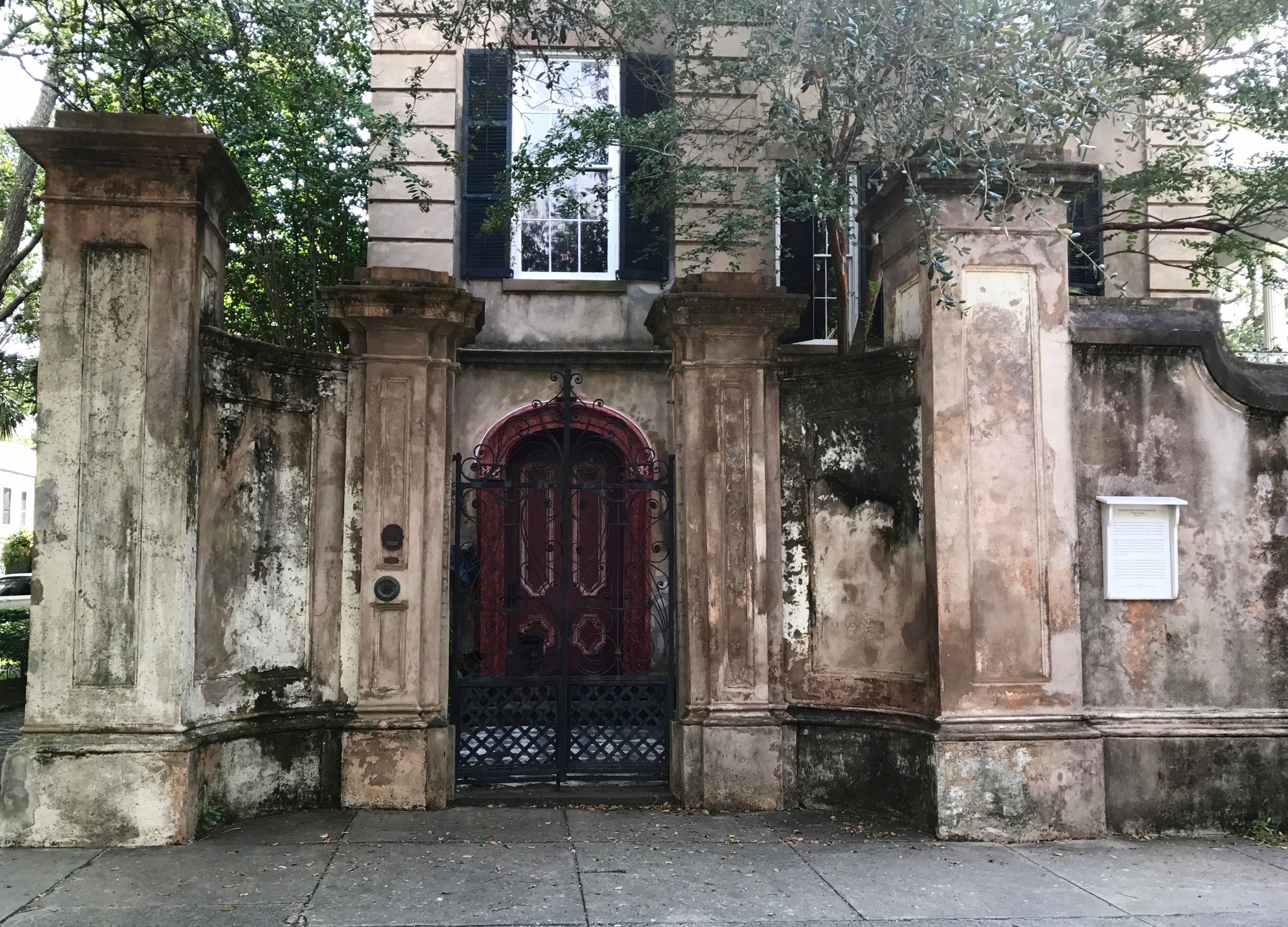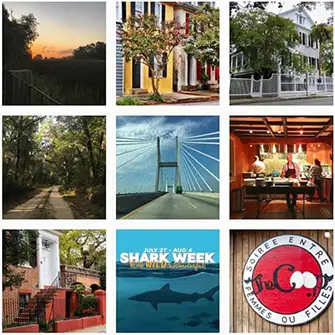
8 Legare Street
Continuing on Legare Street, we’ll stop at Number 8, a house that resonates with Charleston history.
Built in 1857, 8 Legare was first owned by Charlestonian Cleland Kinloch Huger (pronounced “U-gee”). Patrick O’Donnell, an Irish immigrant, was the contractor for this imposing structure which was built in the Italianate style. Here we are greeted by another pair of grand gateposts with a wrought iron gate. This gate with the elongated harps is thought to be the work of Christopher Werner who also designed the Sword Gates at 14 Legare Street.
What always catches my eye is the grand red door – it stops me every time I walk down this street. It’s the kind of door that makes you wonder about the history and life behind it. In the photograph you can see the distressed nature of the gateposts and wall, a timeworn and weathered effect that intrigues me and simply adds to the mystery of Charleston and its history.
I visited 8 Legare Street during the Preservation Society’s Fall Tours last year. Three stories high, the house is large and fortunately retains much of the original interior. When the house was built, entertaining took place on the second floor, which is reflected in the drawing rooms with the original pocket doors, original gas chandeliers, and marble mantelpieces.
In 1927, Burnet Rhett Maybank and his wife purchased 8 Legare Street, and Maybank started his significant political career in city, state, and country. Maybank was a City Councilman, Mayor of Charleston, Governor of South Carolina and a three-term United States Senator, dying unexpectedly in his third term. Personable and popular, he never lost an election.
Maybank was inaugurated as Mayor in January 1932, at a time of severe economic depression for the City. The entire country was dealing with the Great Depression (1929-1939). Fortunately, Maybank was able to steer Charleston through the worst of the financial crisis, and his personal, professional, and political contacts helped Charleston immensely. Maybank became friends with President Franklin D. Roosevelt, who visited 8 Legare Street several times, and the Maybanks were entertained at the White House. In fact, Mrs. Maybank gave FDR his first project for the Works Progress Administration – the rescue and renovation of Charleston’s Dock Street Theatre.
In my next post, we’ll leave the high walls and interesting gates of Legare Street and go one street over to explore some of the historic homes on King Street.



